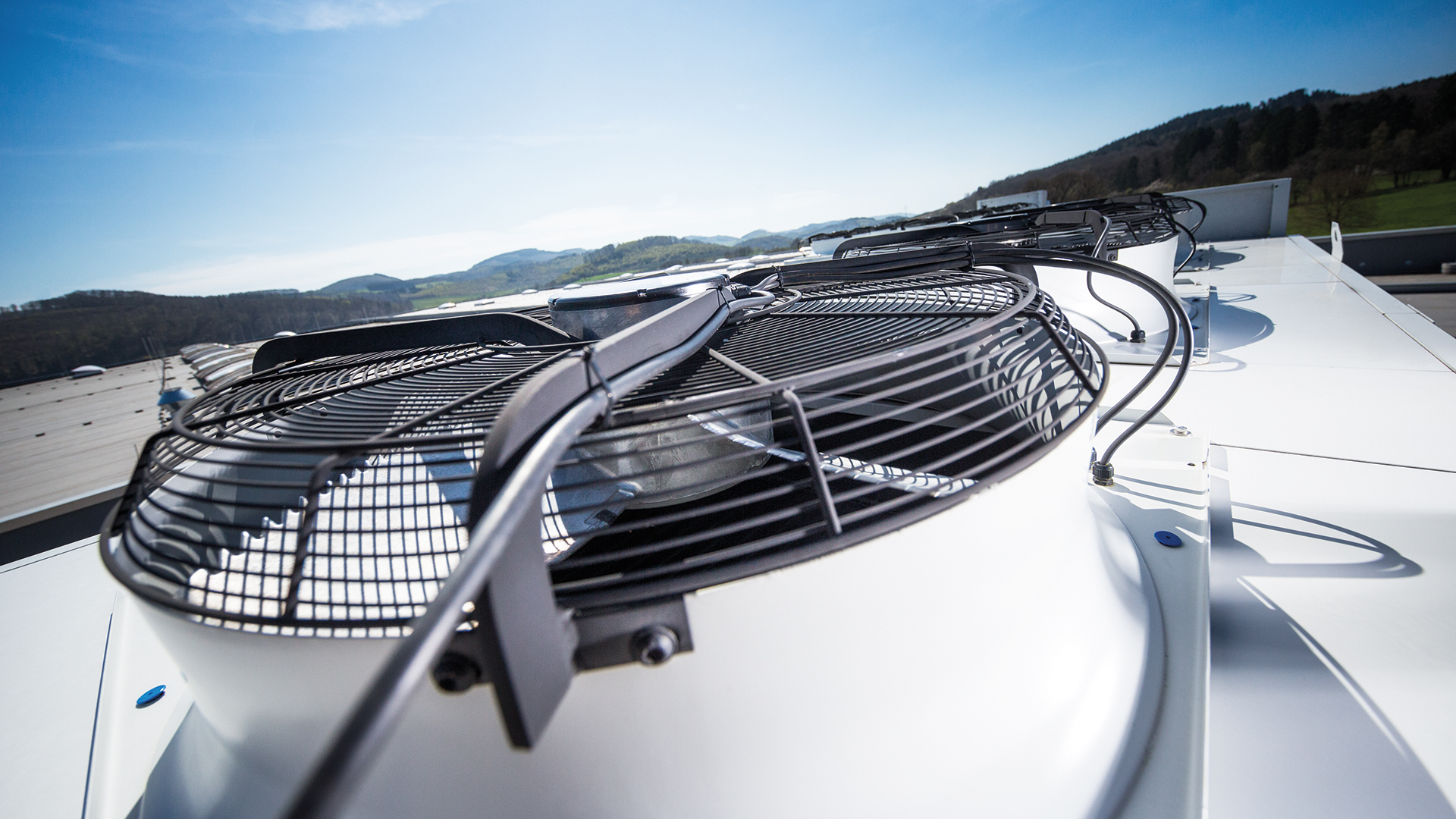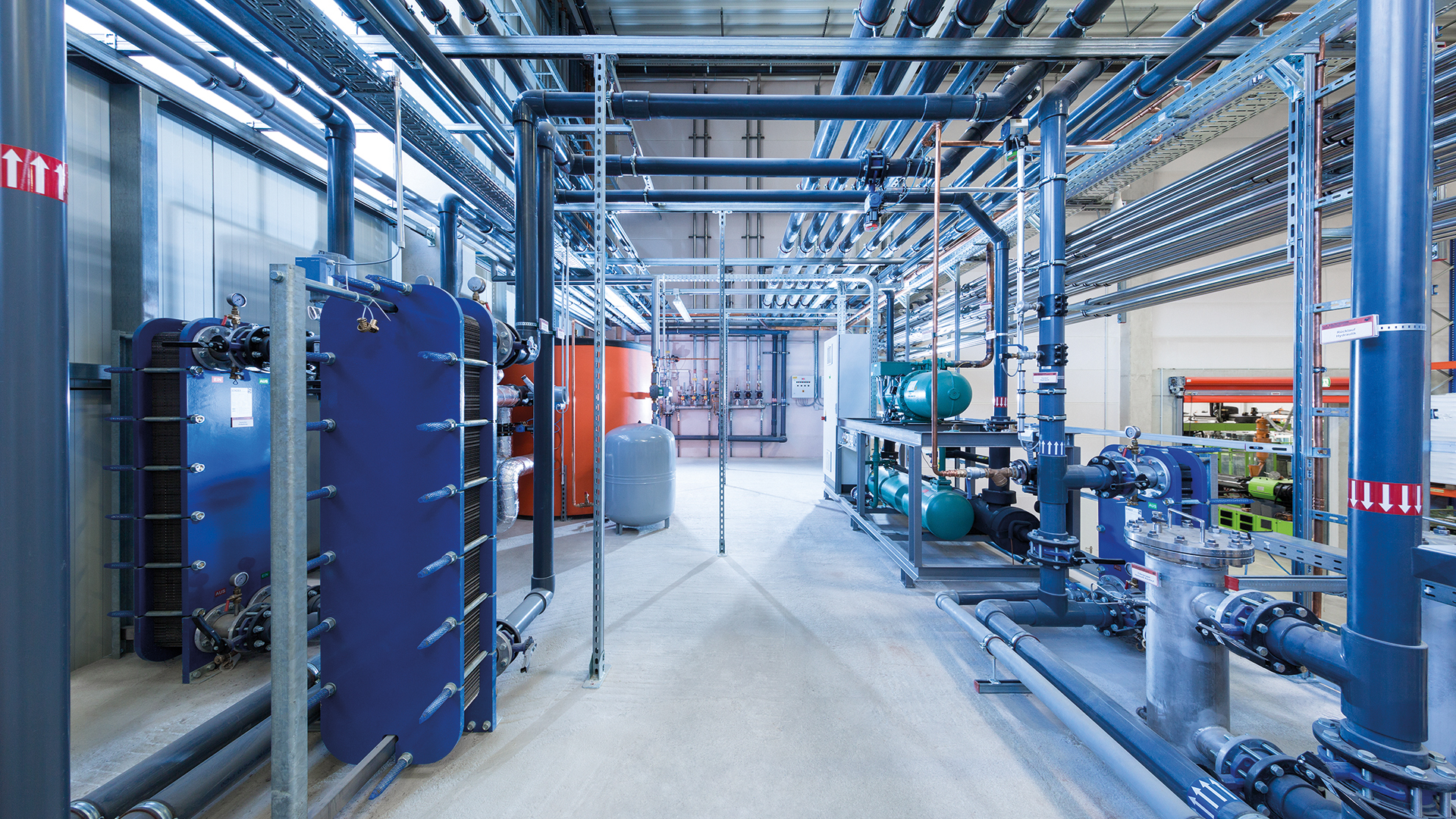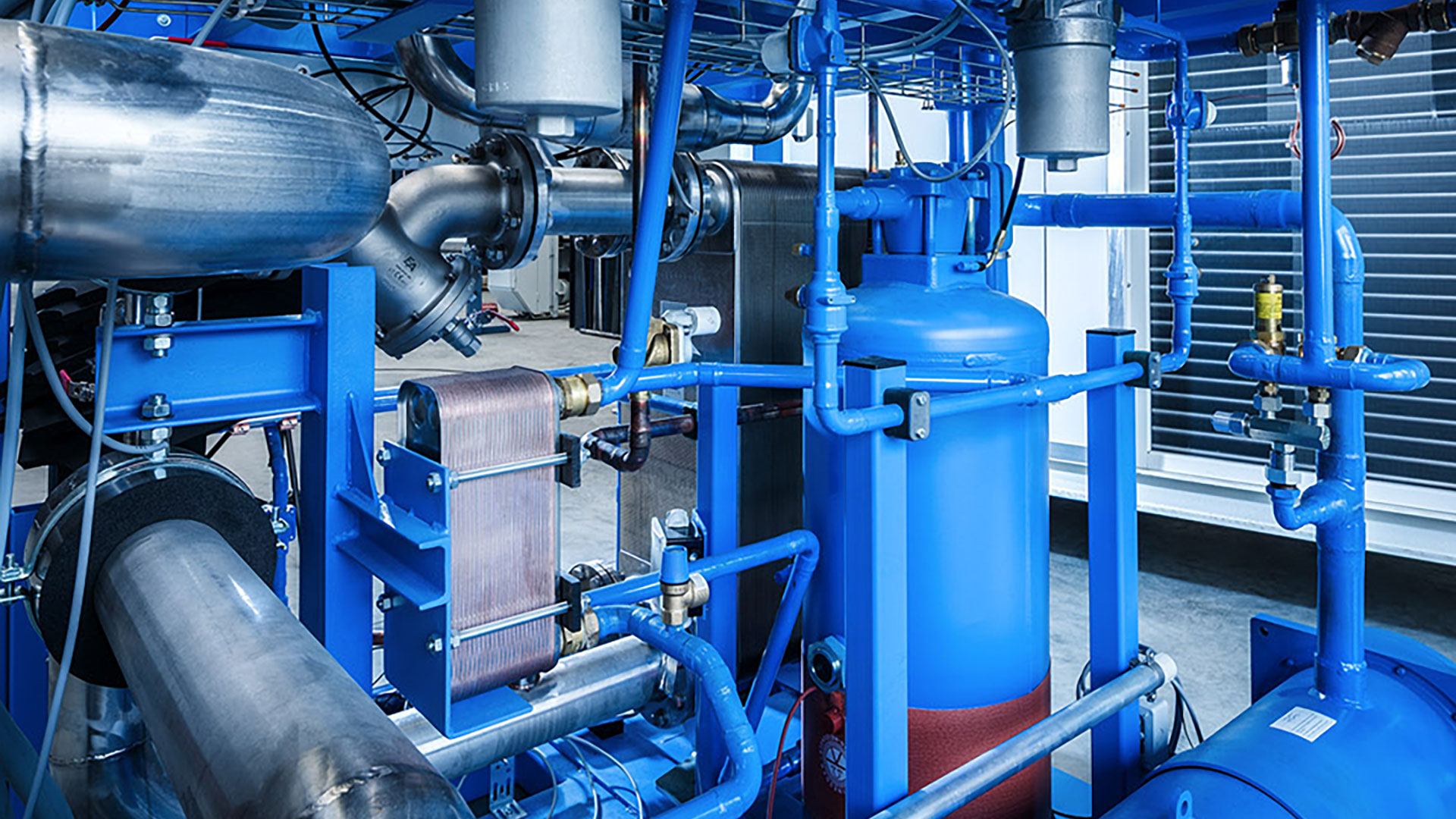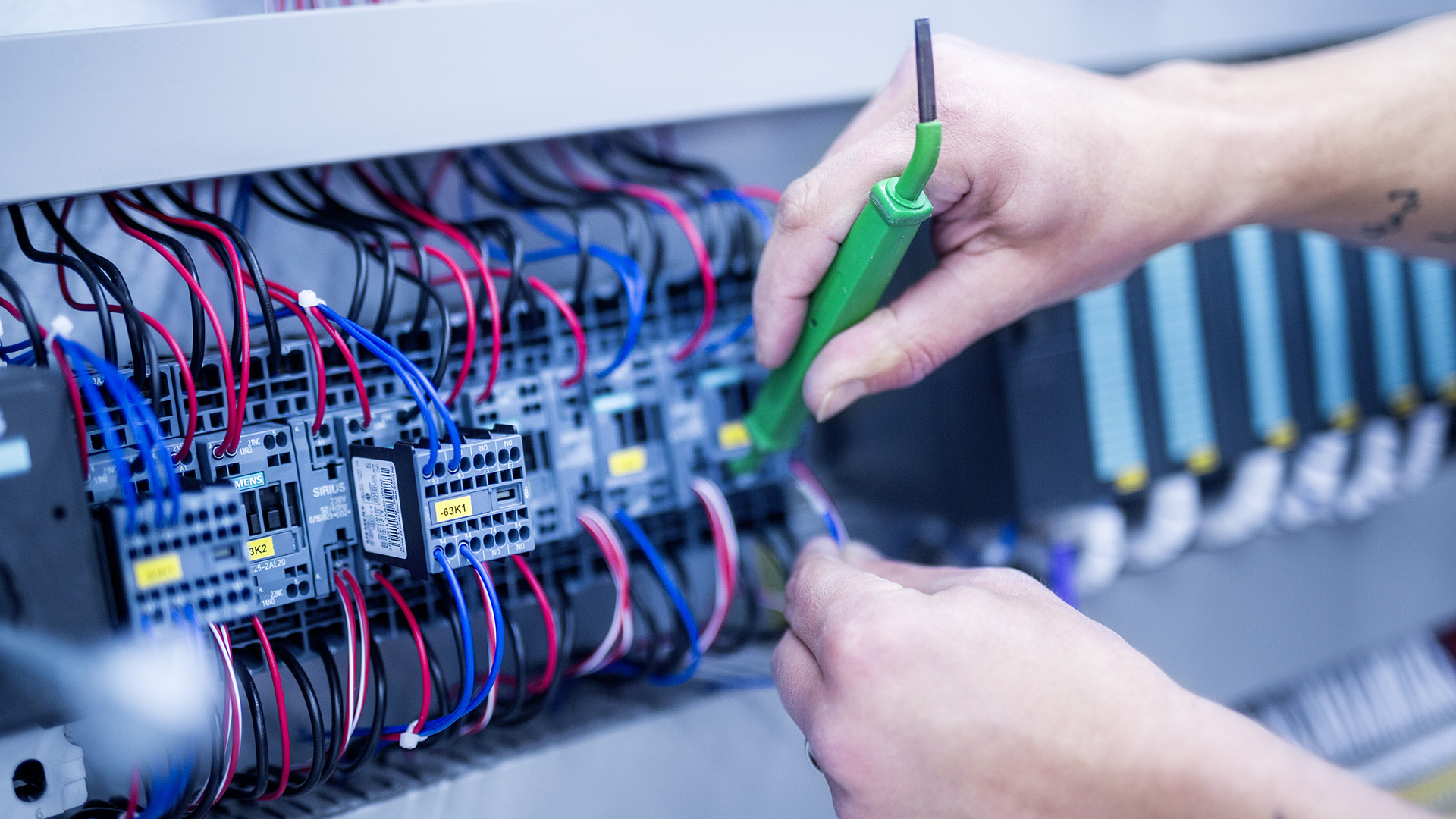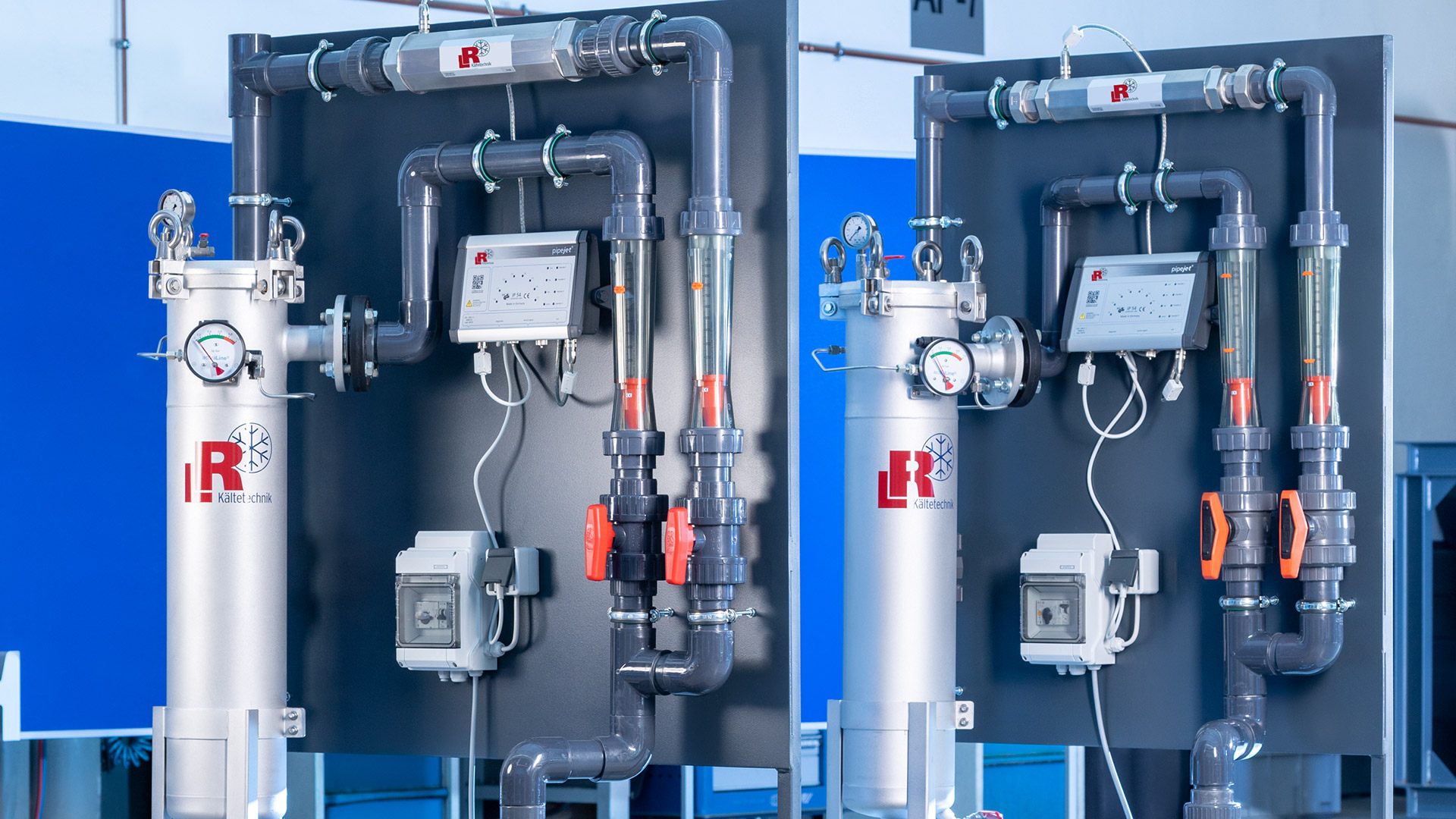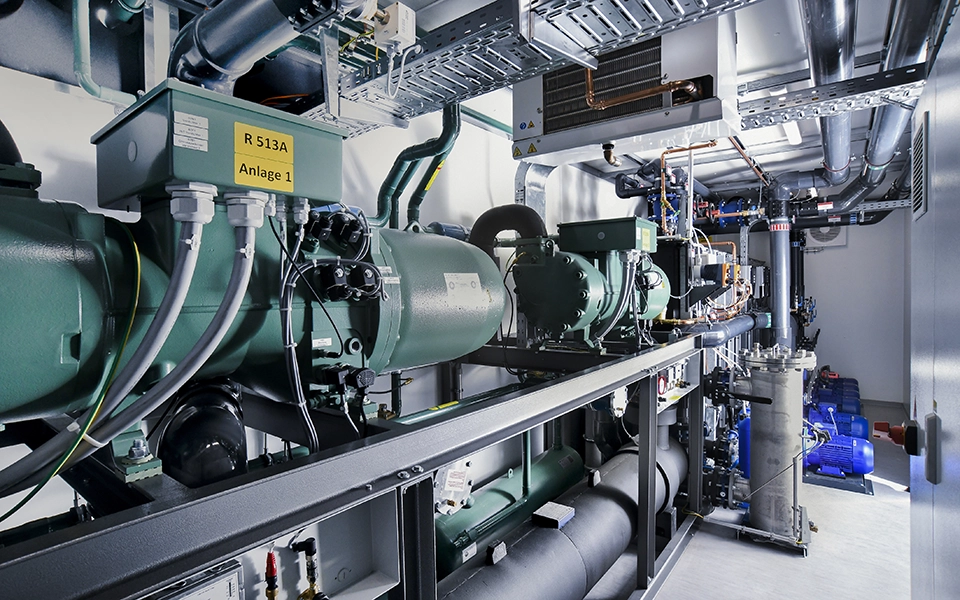Sealed Air Verpackungen GmbH in Alsfeld requires process cooling for its plastics processing, especially for its extrusion lines. The company has replaced its two existing refrigeration systems with a new system designed by L&R, and since then, has only consumed about 20% of the energy needed when directly compared to that required for operating a standard refrigeration system.
“Sealed Air”: This is the company name, as well as its brand name. This internationally active group of companies is known for manufacturing air cushion envelopes, which are used to protect goods during transportation without contributing significantly to their shipping weight.
Basic procedure: Extrusion
This packaging is based on plastics that are processed using special extrusion systems. In this way, the characteristic bubble film with regular, air-filled pockets is created, which ultimately form the padding.
The production of this bubble wrap requires exact tempering: Cold supply is part of that process. A cooling medium flows through large rollers to cool down the plastic that has been melted for processing.
For many years, Sealed Air in Alsfeld used two refrigeration plants to generate the required process cooling: one set up indoors, the other outdoors. Now the cold is produced by a new, central refrigeration plant. The reason for this was the desire of those responsible not only to improve production reliability by investing in a new system, but also to reduce energy consumption and use a permanently sustainable refrigeration system.
Goal: New, energy-efficient refrigeration technology
With this goal in mind, Sealed Air turned to L&R Kältetechnik. L&R not only has extensive experience in individual project planning of energy-saving and environmentally friendly refrigeration systems, but can also provide many references from the plastics industry.
Start with determining the power demand
A needs-based design is a central requirement for permanently economical, energy-optimised operation of a refrigeration system. Therefore, L&R started the project work by assessing the cooling needs and, accordingly, the power requirements.
The old plants were operated with the HCFC refrigerant R22, which had only been available as a recycled product since 2010, and which was later completely banned, starting from 1 January 2015. This makes service more difficult and was another reason for investing in new refrigeration technology. According to its nameplate, the cooling capacity of the installation was around 570 kW with an evaporating temperature of 10 °C. At first glance, these dimensions appeared to be exaggerated, as is the case with many older systems.
Realistically, the current cooling requirement is 210 kW at 100% production capacity, according to a calculation by L&R based on Sealed Air’s data. In order to leave reserves for the future, a cooling capacity of 350 kW was considered appropriate, with a water supply temperature of 19 °C.
Split chiller in container design
For this application, L&R’s project engineers planned an air-cooled split chiller with a cooling capacity of 350 kW. Two refrigeration circuits ensure the necessary redundancy: In the event of a circuit failure, sufficient cooling is still available for (limited) production. Moreover, the term “split” means that the refrigeration machines are installed indoors – in this case, in a container – while the condenser, which dissipates the heat, is located outdoors or on top of the container.
Placing the system in a container has the advantage of freeing up space for production. In addition, the installation on site takes less time.
Cost-benefit calculation for each energy-saving measure
L&R’s typical approach to such projects: The user receives a comprehensive quote for a refrigeration system that meets all technical requirements and produces cold in the most reliable manner. This is the basic service, which is generally standard. DiThe special features of L&R’s offering: Our offering includes numerous energy-saving measures and technologies that, from the point of view of project planners, make sense in individual cases. With regard to each individual measure, the user decides whether to order and use it, or to do without it. The decision is made easily, because for each measure offered by L&R, the costs (i.e. the additional expense for its acquisition) and the expected commercial benefit (in the form of energy savings) are included. The payback period of each measure is therefore transparent.
Energy efficiency right down the line
One of the energy-saving technologies that almost every user opts for is the “VariKon” variable condensing temperature control. It adjusts the condensing temperature according to the current outside temperature. For example, at an ambient temperature of 13 °C, the system is operated at 25 °C instead of 47 °C, as is the case with standard systems. This means: The power consumption of the compressors is considerably lower. The specific savings effect also depends on the temperature profile at the location. For the system at Sealed Air, L&R calculated an annual operating cost saving for “Vari-Kon” of over €30,000
“Winter relief” and demand-driven pump operation
The free cooling unit makes another very significant contribution to energy efficiency. It allows for cold to be generated from the environment at outside temperatures lower than the return temperature. And that means a very long duration of time during which cold is not produced by the chiller. Cold is thus available at virtually no cost, or at a significantly lower cost, because the system is operated in mixed mode (chiller and free cooling unit) at outside temperatures just below the return temperature. Taking into account the climate conditions at the plant location, this results in savings of over €70,000 per year due to the reduced energy costs.
Free cooling mode <15°C – Mischbetrieb 15°C – 21°C – Kältemaschine>21°C – Mixed mode 15 °C – 21°C – Chiller > 21°C
With both energy-saving measures, the overlap results in a saving of approx. €80,000.
In addition, the drives on the consumer pumps – which are designed as double pumps for redundancy reasons – are speed-controlled. Thus, they are operated according to demand. This also saves energy.
Low-GWP refrigerant chosen
The refrigerant used by Sealed Air is the low-GWP medium R 513A. This is a blend of the well-known refrigerant R 134A and the new HFO refrigerant R1234yf. Its GWP value (which indicates its impact on global warming) is 56% lower than that of R 134A. At the same time, very energy-efficient refrigeration systems can be constructed incorporating this non-flammable refrigerant, and the individual components do not have to be of larger dimensions than those in systems that utilise R 134A (or any other refrigerants that have been commercially available up until now).
Sustainable savings: Energy costs reduced by approx. 80%
Summarising the benefits that Sealed Air has achieved with the new refrigeration system, a very simple calculation can be made: With a standard system (and assuming an electricity price of €0.18/kWh), annual energy costs would have been around €103,000. With the system now installed featuring variable condensing temperature control, free cooling and speed-controlled drives, the cost is only approx. €10,000 – €20,000, i.e. around 10 – 20% of the initial value. The user can therefore save almost €80,000 – €90,000 per year in energy costs over the entire service life of the system.
This calculation is also convincing, because the payback periods for the energy-saving measures are short. According to L&R’s calculations, the additional price for “winter relief” (free cooling) pays for itself, in the example stated, in just under a year; and the “VariKon” control even pays for itself within a period of just over six weeks. It is therefore not surprising that Sealed Air decided, without hesitation, to implement these measures, and now operates a refrigeration system that is as future-proof as it is sustainable and energy-saving.
Sector
Plastics & rubber industry
System solution
Container refrigeration systems
Downloads
200812_Focus_Kunststoff_SealedAir_JF_DE_low.pdf (1,9 MiB)
